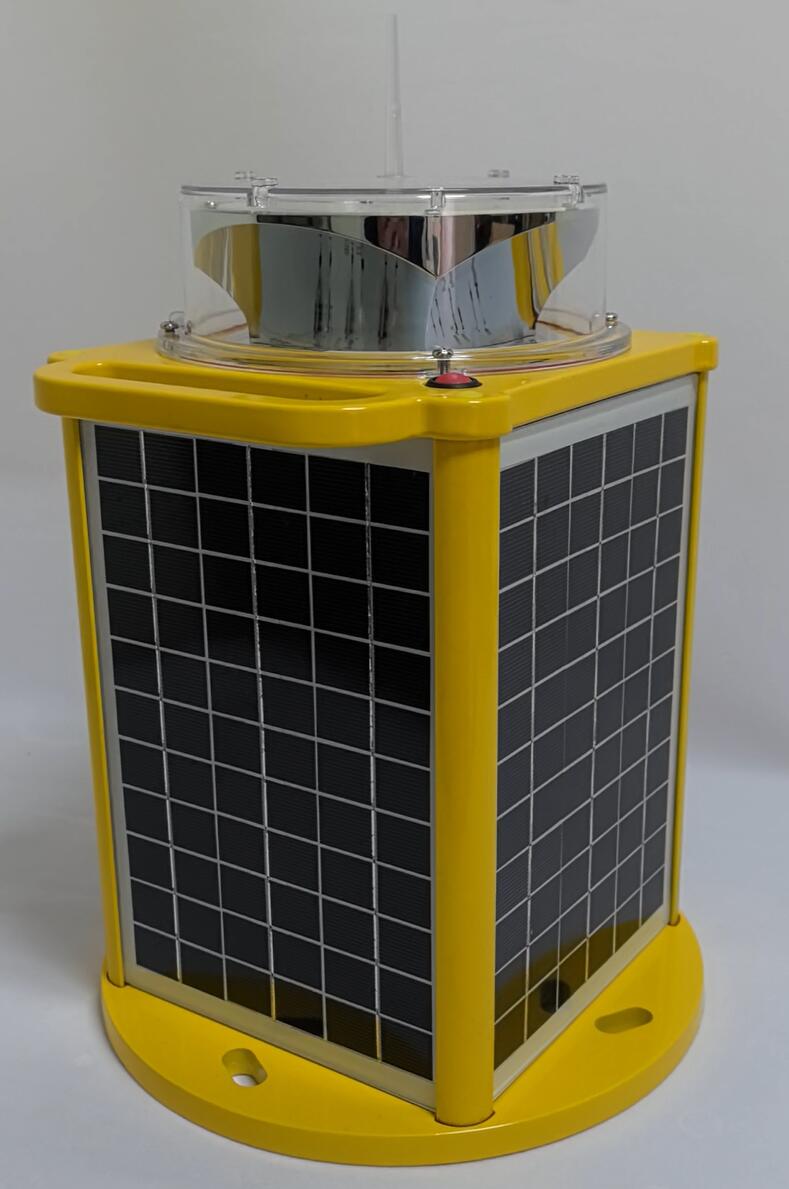Posted: 2024-11-14
In the ever - evolving world of aviation, where safety and efficiency are of utmost importance, solar powered aircraft warning lights have emerged as a revolutionary innovation. These lights not only enhance the safety of aircraft but also contribute to a more sustainable aviation environment.
Solar powered aircraft warning lights are designed with precision and advanced technology. The solar panels used in these lights are highly efficient in capturing sunlight. They are made from materials that can withstand the harsh conditions of the atmosphere, including temperature variations, high - speed winds, and exposure to ultraviolet rays. These panels are strategically placed on the aircraft to maximize sunlight absorption during flight. For instance, on the upper surfaces of the wings and the tail section, where they have the least obstruction and maximum exposure to the sun's rays.
The energy generated by the solar panels is stored in specialized batteries. These batteries are carefully selected for their ability to hold a charge for extended periods and provide a stable power supply to the warning lights. They are often lightweight lithium - based batteries that can endure the vibrations and mechanical stress associated with flight. The charging system is designed to be intelligent, ensuring that the batteries are charged optimally without overcharging or undercharging, which could damage the battery life or lead to power failures.

The warning lights themselves are usually based on LED technology. LEDs are chosen for their high brightness, low power consumption, and long lifespan. The color of the lights is standardized according to international aviation regulations. Red lights are typically placed on the left wingtip, green on the right wingtip, and white at the tail. This color - coding system allows pilots and air traffic controllers to quickly and accurately identify the position and orientation of an aircraft from a distance. The intensity of the lights can be adjusted based on the ambient light conditions. During daylight hours, the lights may operate at a lower brightness to conserve energy, while during night or low - visibility conditions such as fog or rain, they increase in brightness to ensure maximum visibility.
| Solar Powered Aircraft Warning Lights | FGV3 |
One of the significant advantages of solar - powered aircraft warning lights is their environmental friendliness. Traditional aircraft warning lights often rely on power sources that consume fossil fuels or use batteries that need to be replaced frequently, contributing to waste. Solar - powered lights, on the other hand, utilize the renewable energy of the sun, reducing the carbon footprint of aviation operations. This is in line with the global efforts to make the aviation industry more sustainable and reduce its impact on the environment.
In terms of cost - effectiveness, solar - powered warning lights offer long - term savings. Although the initial investment may be higher than traditional lighting systems, the reduced need for fuel or battery replacements over the life of the aircraft results in lower operational costs. Airlines and aircraft operators can benefit from these savings, especially as the technology continues to improve and become more affordable.
The reliability of solar powered aircraft warning lights is another crucial aspect. With built - in backup power systems and redundant components, these lights can continue to function even in the event of a partial failure or during periods of limited sunlight. The simplicity of the solar - powered design also reduces the likelihood of mechanical or electrical failures compared to more complex traditional lighting systems. This reliability ensures that aircraft remain visible at all times, minimizing the risk of mid - air collisions.
Solar - powered aircraft warning lights have a wide range of applications. They are used not only on commercial airliners but also on smaller private aircraft, general aviation planes, and even unmanned aerial vehicles (UAVs). For UAVs, which are becoming increasingly prevalent in various industries such as surveillance, delivery, and mapping, having reliable and energy - efficient warning lights is essential to ensure their safe operation and avoid collisions with other aircraft or obstacles.
In conclusion, solar powered aircraft warning lights are a remarkable advancement in aviation safety. Their ability to harness solar energy, combined with their reliability, cost - effectiveness, and environmental benefits, makes them an ideal choice for modern aircraft. As technology continues to progress, we can expect further improvements in these lights, leading to even safer and more sustainable aviation operations. The future of aviation will undoubtedly see a greater integration of solar - powered solutions, with these warning lights at the forefront of this transformation.